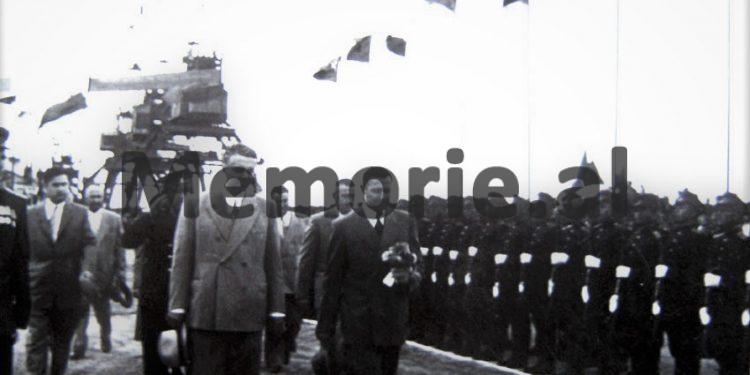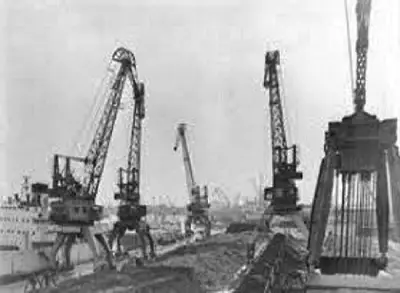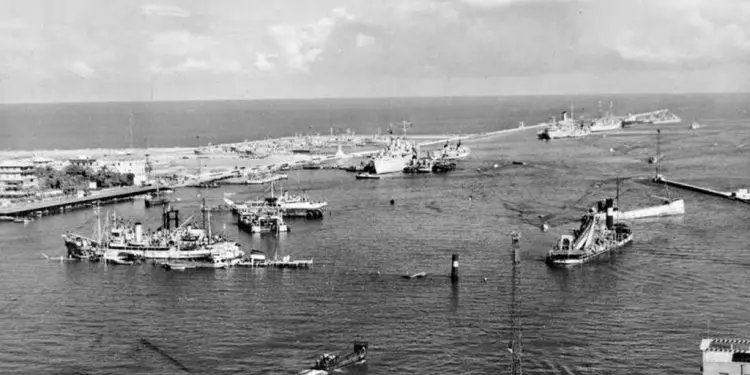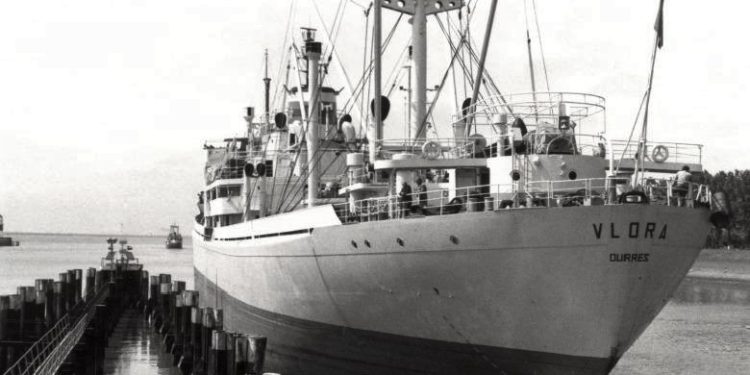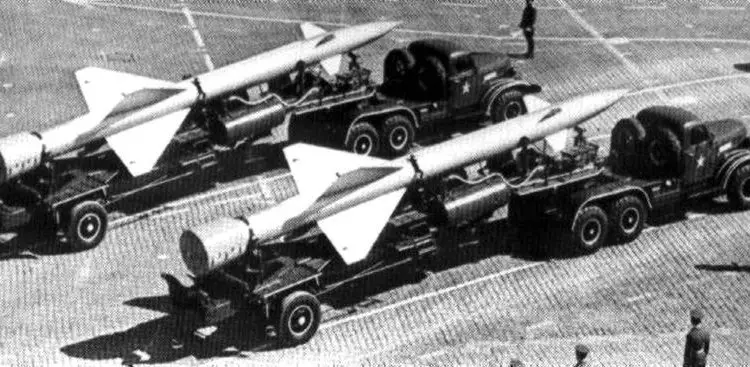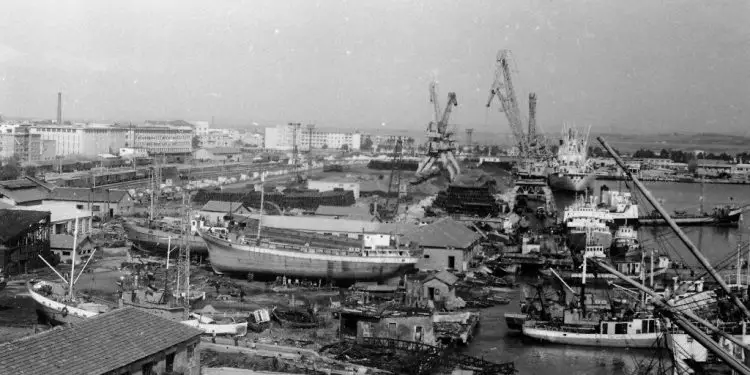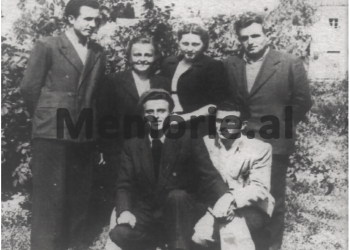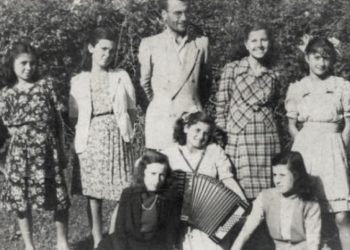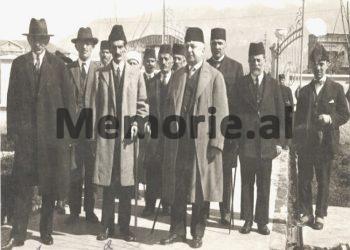Memorie.al / In 1959-1960, when Albania was a member of the Warsaw Pact, our country was armed with modern Soviet missiles, which greatly increased its defensive military potential, in relation to potentially hostile neighbors. With the termination of relations with the Soviet Union, all supplies were interrupted, including the supply of guided anti-aircraft missiles “Sam 2”, the pride of military technology of that period, which constituted a guarantee for the strengthening of the defense of the Motherland. After the Soviets were dismantled and removed from the largest naval base in the Mediterranean, the missiles began to be supplied by the newest allied state, Mao Zedong’s People’s Republic of China. Their main transport was carried out by the trans-oceanic ship “Vlora”, which was commanded by Captain Qemal Hate, “Hero of Socialist Work”, who passed away a few years ago.
The rockets coming from China, due to the long distance, and the non-allowance of naval vessels for this transport, were launched in complete secrecy, being dismantled and covered with cargoes of rice in the steamer. Likewise, for the Chinese variant Mig aircraft and other weapons.
Their arrival and the rockets themselves, which for that period were among the most modern, were returned and still remain a part of national pride, especially after the departure of Soviet troops and ships from the Pasha Liman base.
The employees of the Port indicate that these goods of special importance are constantly unloaded at night. Regarding the maritime transport of missiles with the ship “Vlora”, says Ylli Bare, the son-in-law of Qemal Hates, also a former transport ship captain, who says that the transport of missiles from China was carried out by the ship “Vlora”.
Captain Ylli Bare, shows that the ship, apart from the journey from Cape Town, mainly passed through the Suez Canal and that for this ship, the state had found illegal channels and paid the Egyptian authorities, dollars in suitcases and the ship escaped detailed control that could endanger the strategic load it brought to the homeland.
About this transport of extraordinary political and strategic importance, Ylli Bare shows that the rockets were put into the barns of the steamer in their final part, from 8 to 10 pieces.
“Besides them, tanks, cannons, even Mig jet planes were transported on the steamer. Even the first military aviators, who would go to China for training, went on this steamer, about 17 people. They left from Durrës and returned with this steamer, along with the first of the most modern planes of its time.
It goes without saying that the planes were dismantled. Since it was paid for the passage to Suez, “Vlora” did not queue like other ships. And we must bear in mind that here, there was rarely enough time for other ships to pass, but our ship passed without a queue”, emphasizes Ylli.
“In Egypt, since it was known that there were diplomats and secret service officers who hang out in the various embassies, the usual practice was that the cargo being transported was declared to be a cargo of rice and agricultural machinery, cargo covering military facilities. Meanwhile, on the deck, even micro-fairs were allowed to be organized by local merchants.
For the bazaar, as they called it, 30-40 Egyptians, who came in boats to sell things to the sailors, were allowed to board the deck. It was a clever psychological maneuver, to remove any doubts that anyone might have, about the type of cargo and to reassure foreign observers that the ship had not loaded important things, of those that were suspected…!
Meanwhile, when the ship left the Channel, our two submarines waited for it near the port of Alexandria and escorted it through the Mediterranean Sea, during the entire further journey to the bay of Durrës. The journey of the submarines towards the port of Alexandria in Egypt coincided with the departure of the “Vlora” from China.
When “Vlora” came to Durrës, it waited at night again to enter the port, where work was interrupted in all sectors. The vehicles were unloaded by the army at night and then transported under conditions of complete military secrecy to their destination. Usually the military transports between China and Albania were received by Mehmet Shehu”, says Captain Ylli.
How did the first Soviet rockets arrive at the Port of Durrës?
The first anti-aircraft guided missiles came from the Soviet Union. Their arrival was extremely important for our country, as we were the 2nd country in the world, after the Soviet Union, to be equipped with this sophisticated modern technology for that period of time.
The first missiles reached our country in 1959. Regarding this very important event, according to the former commander of the Anti-Aircraft Missile Department, Lelo Leli, the first surface-to-air missiles in Albania came from the former Soviet Union, in the month December 1959.
They were received at the port of Durrës and at night, with strict security and protection measures, they were transported to Peze-Helma. There, over time, the storage and supply base for missiles, as well as the facilities for deploying radio equipment and launch beds, were built.
It was called a learning center. While the filling base, it was named technical ward or ward 3700 k. Those missiles had a length of 10.88 meters. The rockets that were part of the armament of the Air Defense of the Albanian Army, did not have nuclear filling, but only had war filling, which, when it exploded, was divided into 3,600 pieces.
Their relative weight was about 2 tons. The missile arsenal of our country consisted of about 300 missiles of the ‘SAM-2’ (Soviet) type, as well as ‘HQ-1’, ‘HQ-2’, of Chinese production. They continued to serve the defense of the country, until the period of the explosion of Gërdec.
Enver Hoxha received the first rockets in the Port
The former engineer of the Port of Durrës, who unloaded these rockets, wrote in his memories before his death that the rockets reached the port of Durres on the night of December 16, 1959. They were discharged in great secrecy and were about 28 pieces of surface-to-air missiles, bought in the Soviet Union.
They came with Soviet military transport ships. The crane operator who unloaded them with his crane, type “Ganz” in the port, was one of the oldest and most experienced crane operators in the port, Qirjako Moçi. Enver Hoxha himself and Kadri Hazbiu followed their dismissal by the crane. Enver was concerned about the completion of the unloading operation.
Vinçieri remembered that Enveri had gone to the crane and said: – “Listen Qirjako, we bought these rockets with the sweat and blood of the people, with gold. Therefore, great care is needed.” Qirjako remembered how they unloaded about 28 rockets that night.
There have also been doubts that this discharge was observed by some foreign intelligence service, since at a considerable distance a person fishing with a hook at the fishing pier marked a + sign on a pack of cigarettes for each discharged missile Diamond”.
Qiriako Moçi, who unloaded the first rockets that arrived in the port of Durrës, worked as a crane operator from 1952 until 1989, when he retired. It was the longest-lived crane operator in the Port of Durrës. In all other cases, when the missiles arrived from China, they were awaited at the port by former Prime Minister Mehmet Shehu and Deputy Prime Minister and Minister of Defense, Beqir Balluku.
Testimonies of Kajo Hima, former sailor of the transoceanic ship “Vlora”
Kajo Hima is an old sailor who has worked 38 years at sea. Of these years, 9 of them, he spent on the ship “Vlora”, and he remembers the moments when he was transporting missiles and other important military objects. It brings to mind how, even in China, rockets were loaded at night. The security measures there were very high, especially when there were Soviet ships in the port.
-“They took us out to Rada and we waited for night to enter the port and be loaded. The ship’s barns had 3 floors. Downstairs, we loaded the rockets and tanks that were packed in crates. We lashed the cargo tightly with cables and very carefully, so that, if there was a storm during the voyage, they would not be swayed and damaged by the collisions that caused the great waves in the seas and oceans.
We threw loads of rice and wheat on top of the rare weapons. In order to disguise the journey with the food transport, when we came to Durrës, “Vlora” entered the port at night, to be unloaded, under maximum security conditions and all the lights were turned off.
Only one corridor of light was allowed for unloading, meanwhile the traditional port workers had blocked their shift and were going home. So are the police. At that time, the port was guarded only by State Security officers. While the ship’s crew was provided with a special permit and when we left the service, they were checked by Security officers who watched everything.
Even because of their strictness, one night I had an incident with them. I took a shower and left in a hurry. When they checked me, I asked them to go back to the ship to get my permit. Yes, they did not believe me and sent me directly to the isolation rooms of the Department of Internal Affairs. After a while, it took the arrival of the Head of the Branch, Kopi Niko, who knew me and unblocked the situation”.
Kajo says that; the ship “Vlora” was one of the best of the Merchant Marine Fleet of our country, with a transport capacity of 12,600 tons. It had only been in production for a year when it was purchased in Genoa, Italy, in 1961, for about 4 million USD. The ship was also powered by solar.
As soon as it entered the use of our Merchant Fleet, as it was designated for the transport of missiles and other military equipment supplied at that time by the Chinese state, in 1961, its staff was completed with officers of the Navy.
The ship “Vlora” is remembered by its connoisseurs and sailors as a very strong sea vehicle, as it had never had any defects on the way. Even when he had endured long voyages and typhoons in the oceans he traversed. Memorie.al




